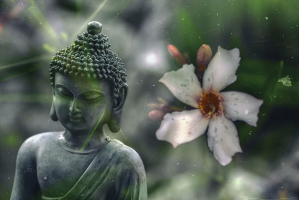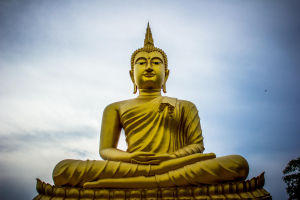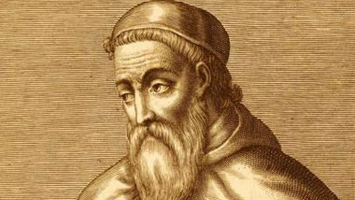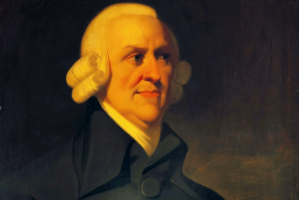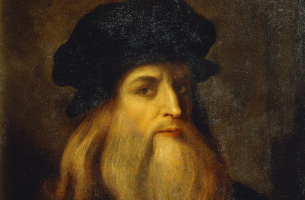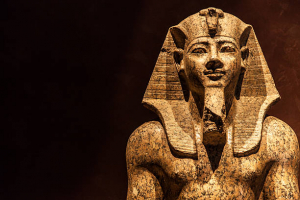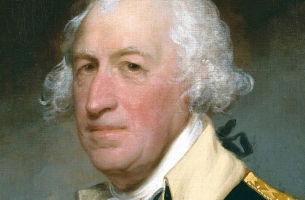Top 10 Interesting Facts About Buddhism
Buddhism, one of the world's major religions, holds a rich history and profound philosophy. Here are ten interesting facts about Buddhism.... read more...
-
After Siddhartha Gautama attained enlightenment, Buddhism originated.
Born in Lumbini around the 5th century BCE into a royal family of the Shakya clan, Siddhartha Gautama, later known as the Buddha, meaning "the awakened one" or "the enlightened one," played a crucial role in the origin of Buddhism. His father, King Suddhodana, aspired for Siddhartha to become a great ruler.
However, at 29, Siddhartha ventured beyond the palace walls, setting forth on a profound spiritual journey. Abandoning his princely life, he immersed himself in rigorous ascetic practices and sought wisdom from esteemed spiritual teachers of his era.
After six years of intense spiritual practice and meditation, Siddhartha experienced a profound realization while seated under a Bodhi tree in Bodh Gaya. This revelation allowed him to see the nature of suffering and its cessation, marking the birth of Buddhism and earning him the title of the Buddha.
Subsequently, the Buddha dedicated the rest of his life to extensive travels throughout the Indian subcontinent, sharing his teachings on the Dharma with all who were receptive. Around the age of 80, in Kushinagar, India, the Buddha passed away. Nevertheless, his teachings persisted throughout the region, eventually reaching various parts of Asia and beyond. This propagation gave rise to Buddhism's diverse and rich traditions that thrive today.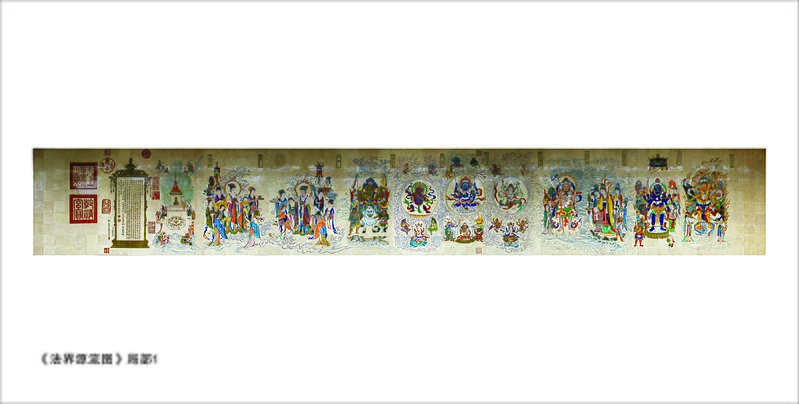
Origin of Buddhism - Photo on Wikimedia Commons (https://commons.wikimedia.org/wiki/File:Origin_of_Buddhism.jpg) Video by History & Origin -
Buddhists believe in reincarnation, the cycle of birth, death, and rebirth.
Reincarnation is a concept in various religious and spiritual beliefs, such as Buddhism, Hinduism, Jainism, and some New Age philosophies. It entails the idea that after death, an individual's soul or consciousness is reborn into a new body, initiating a new life cycle. This process of rebirth endures indefinitely until the soul attains spiritual liberation or enlightenment.
Reincarnation extends beyond human beings; it is believed to transpire across diverse realms of existence. In many belief systems embracing reincarnation, the ultimate aspiration is to liberate oneself from the cycle of Samsara. This emancipation is attained through spiritual enlightenment, self-realization, and the renunciation of all desires and attachments.
Reincarnation captivates the interest and sparks debates among numerous researchers and scholars. Some case studies, especially in parapsychology, have been put forth as evidence of reincarnation experiences. However, due to its metaphysical nature, reincarnation largely eludes scientific validation.
In conclusion, reincarnation is a profound and intricate concept that varies among diverse religious and spiritual traditions. It elucidates the cycle of life and death and furnishes a framework to comprehend the ramifications of actions and the quest for spiritual liberation.
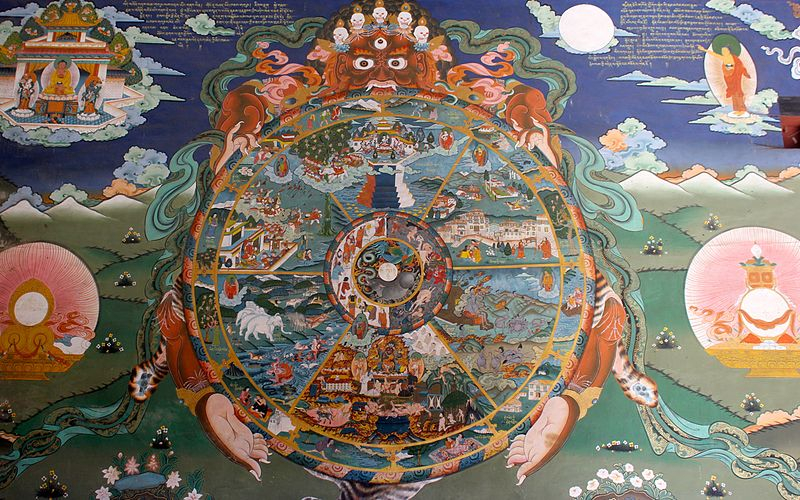
The wheel of life, Buddhism Bhavachakra - Photo on Wikimedia Commons (https://commons.wikimedia.org/wiki/File:The_wheel_of_life,_Buddhism_Bhavachakra.jpg) 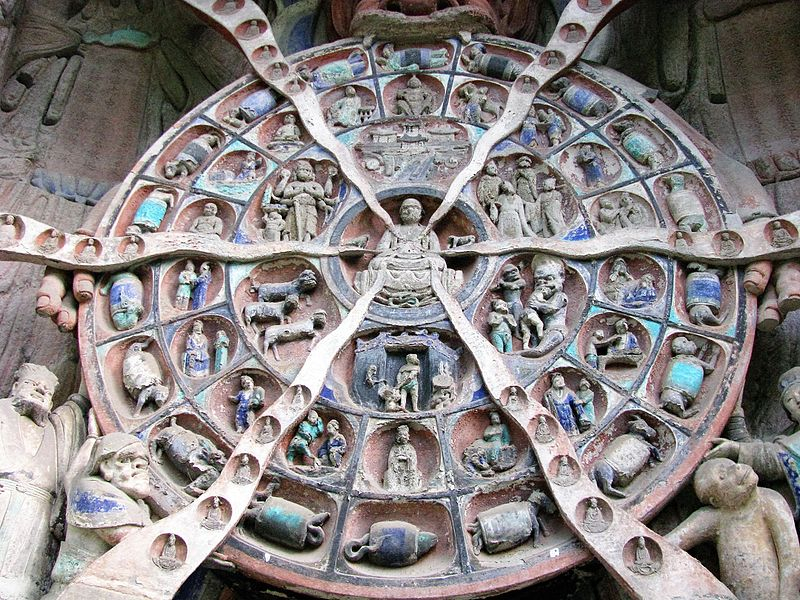
Buddhist Wheel of Life - Photo on Wikimedia Commons (https://commons.wikimedia.org/wiki/File:Buddhist_Wheel_of_Life.jpg) -
Another fact of Buddhism is the Middle Way, advocating for moderation and balance, avoiding extremes.
The Middle Way finds its origin in the life of Siddhartha Gautama. Before his enlightenment, he embraced an existence of extreme asceticism, subjecting himself to severe self-mortification and deprivation. Nevertheless, he realized such rigorous practices did not lead to genuine liberation or enlightenment. Dissatisfied with indulgence and asceticism, he relinquished these extremes and unveiled the Middle Way as the path to awakening.
The Middle Way encourages steering clear of two extremes: the relentless pursuit of sensual pleasures and the rigorous practice of self-mortification. Instead, it highlights the importance of adopting a balanced and moderate approach to life, transcending the allure of excessive joy and suffering that severe ascetic practices induce. Individuals can skillfully navigate life's challenges with wisdom and inner peace by cultivating a mindful and balanced perspective.
The idea of the Middle Way has transcended Buddhism and holds appeal for individuals seeking balance and moderation in diverse aspects of life. Its principles have practical applications in personal growth, ethical decision-making, and various other areas of human endeavor.
The Middle Way is a crucial Buddhist principle, advocating a balanced and moderate approach to life. By steering clear of extremes and embracing the Noble Eightfold Path, practitioners aspire to transcend suffering and attain enlightenment and liberation. This timeless and essential teaching inspires individuals, guiding them toward harmony and wisdom in their spiritual and daily lives.
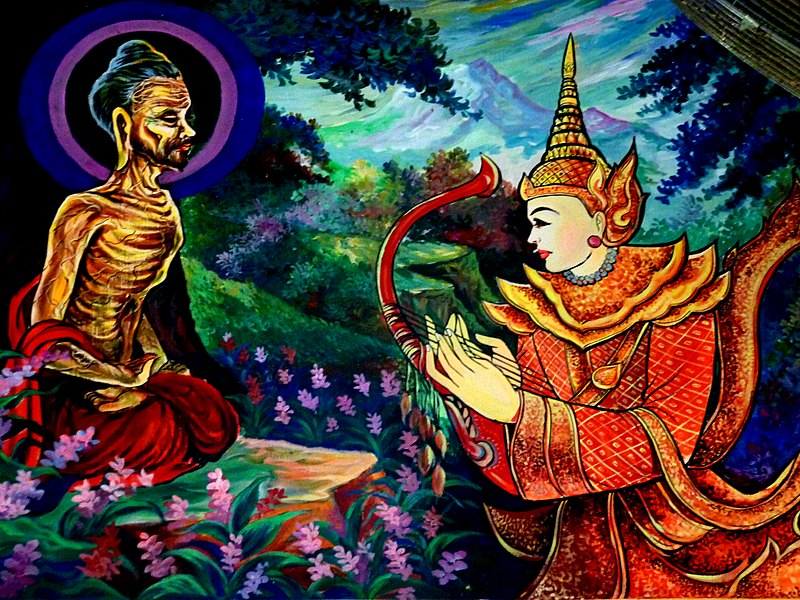
The Bodhisatta Learns the Middle Way - Photo on Wikimedia Commons (https://commons.wikimedia.org/wiki/File:035_The_Bodhisatta_Learns_the_Middle_Way_%289014442088%29.jpg) Video by Nichiren Buddhism -
"Buddhists do not adhere to a belief in a god" is one of the most interesting facts about Buddhism
Considered a non-theistic religion, Buddhism does not center around the worship of a personal creator god, unlike many other major religions. Its core teachings are directed toward comprehending the nature of human suffering and the path to liberation from it. This path involves understanding the Four Noble Truths, following the Eightfold Path, and nurturing one's wisdom, compassion, and mindfulness to attain liberation.
Buddha is honored as a Teacher, not a divine being or god, leading others toward liberation from suffering. While Buddhism does not embrace the idea of a creator god, it acknowledges the existence of diverse beings in different realms. However, these beings are neither immortal nor all-powerful, and like all others, they are also subject to the cycle of birth and rebirth.
Buddhism's non-theistic essence enables compatibility with other religious beliefs. In countries where Buddhism coexists with other religions, many Buddhists may integrate aspects of their local traditions while adhering to Buddhist principles.
In summary, Buddhism stands out among major religions due to its non-theistic perspective. It fosters the pursuit of enlightenment through self-awareness, compassion, and understanding, devoid of reliance on a higher power or external deity. This aspect has significantly made Buddhism appealing and adaptable across diverse cultures and throughout history.
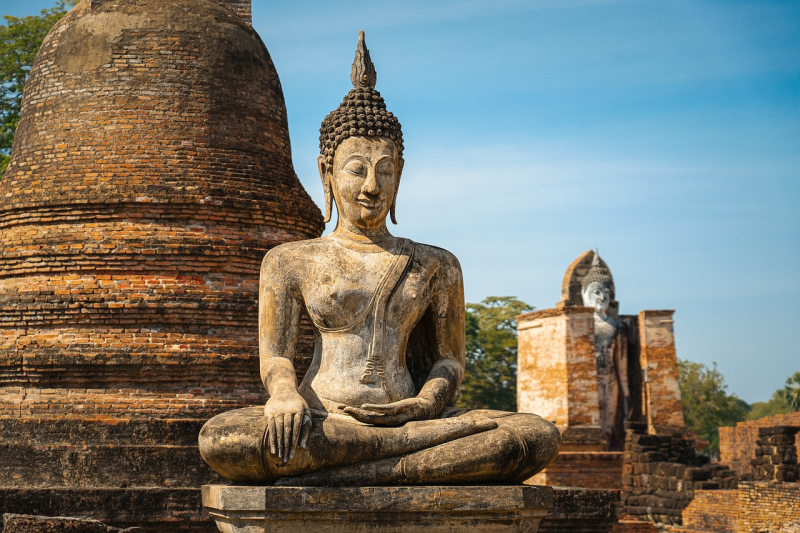
Photo on Pixapay (https://pixabay.com/photos/buddha-statue-thailand-buddhism-5410319/) Video by HinduAcademy -
Dharma refers to the teachings of the Buddha and the cosmic law and order that governs the universe.
The Wheel of Dhamma holds immense significance in Buddhism as it symbolizes the teachings of the Buddha and the path to liberation from suffering. According to beliefs, the Buddha delivered his first sermon soon after enlightenment at Deer Park in Sarnath, India. During this momentous discourse, the Buddha set the Wheel of Dhamma in motion by expounding the Four Noble Truths and the Noble Eightfold Path.
The Wheel of Dhamma is commonly portrayed as a circle adorned with eight spokes, with each spoke representing one of the Noble Eightfold Path factors: Right View, Right Intention, Right Speech, Right Action, Right Livelihood, Right Effort, Right Mindfulness, and Right Concentration. Its circular shape symbolizes the perfection and completeness of the Buddha's teachings, embodying his profound wisdom. Moreover, the Wheel of Dhamma represents the Buddha's boundless compassion and unwavering dedication to guiding sentient beings toward enlightenment and liberation.
In certain Buddhist traditions, the Wheel of Dhamma is linked to the Three Turnings of the Wheel of Dharma, which denote the three significant sets of teachings imparted by the Buddha during his lifetime. The first turning occurred at the Deer Park in Sarnath, the second at Vulture's Peak near Rajgir, and the third at Shravasti. Each turning contributed essential insights to enlightenment and liberation from suffering.
To conclude, the Wheel of Dhamma is a potent symbol encapsulating the essence of Buddhism's core teachings and the path to enlightenment. It embodies the perpetual dissemination of wisdom and compassion worldwide, inspiring practitioners to embrace the Noble Eightfold Path and achieve liberation from suffering.
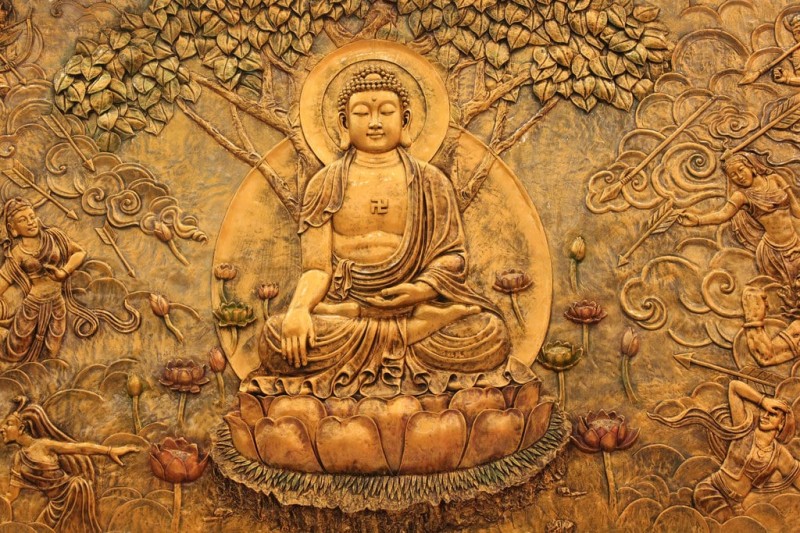
Photo on World History Encyclopedia Video by Bodhisattva -
Buddhist monks and nuns practice head-shaving.
Buddhist monks and nuns shaving their hair hold profound symbolic and practical significance within their monastic lifestyle. By renouncing their hair, they detach from vanity and attachment to physical appearance, embracing a simple and humble way of life.
Shaving the head is a visible testament to a person's dedication to the monastic life, distinguishing monks and nuns from lay practitioners and signifying their commitment to Buddhism. This practice creates a uniform appearance among all monastics, irrespective of their background or previous social status.
Although shaving the head is widespread in many Buddhist communities, there can be variations across different cultures and regions, with some traditions having specific rules or rituals related to head shaving. However, the way of head shaving is not a mandatory requirement to attain enlightenment. Some sources indicate that Siddhartha Gautama had hair, at least occasionally.
Ultimately, shaving the head holds profound spiritual and philosophical significance for Buddhist monks and nuns. It aligns with the core principles of Buddhism, such as renunciation, non-attachment, and the pursuit of simplicity and spiritual growth, making it more than just a physical act.
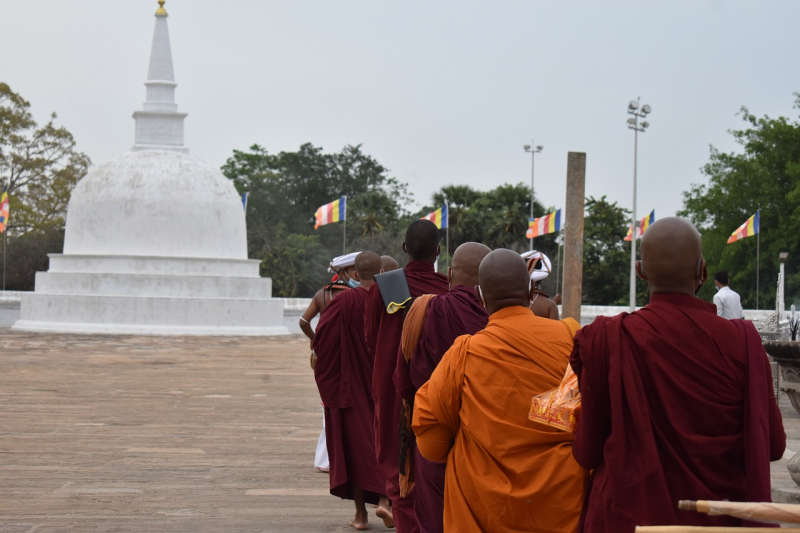
Temple, Monks, Nun - Photo on Pixapay (https://pixabay.com/photos/temple-monks-nun-buddha-buddhism-6326939/) 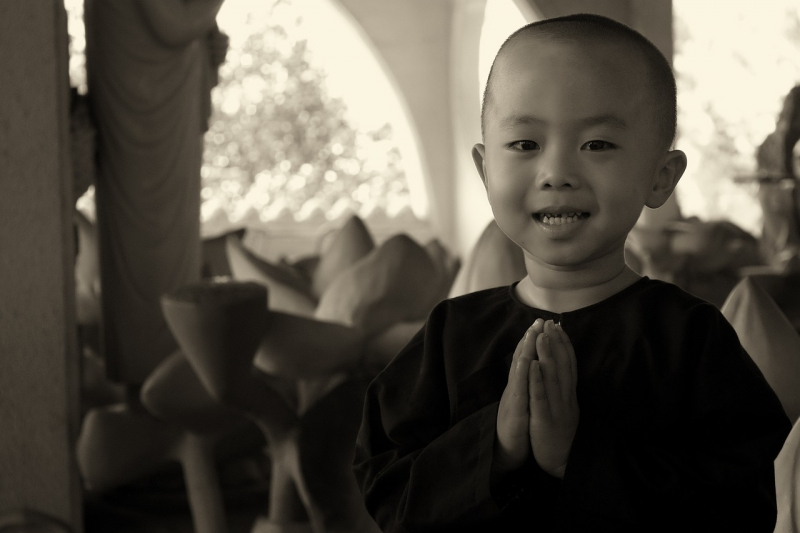
Monk, Nun, Religion - Photo on Pixabay (https://pixabay.com/photos/monk-nun-religion-pray-temple-1741931/) -
Mandalas are intricate geometric patterns used in meditation.
Mandalas, intricate and symmetrical geometric designs, are essential in diverse spiritual and cultural traditions. These sacred patterns find application in spiritual, ceremonial, and artistic contexts, serving as a potent means for meditation and contemplation.
Mandalas find extensive usage in both Buddhist and Hindu traditions. Within Buddhism, mandalas serve as aids for meditation, symbolizing the path to enlightenment and the realm of perfect harmony. In Hinduism, they hold significance in numerous religious ceremonies and rituals, representing the universe and the divine.
Mandalas are frequently regarded as a microcosm of the cosmos, with their symmetrical patterns symbolizing the interconnectedness of all living beings and the cyclical nature of life. These sacred designs can be found in various cultures, such as Native American, Islamic, and Christian traditions, where they hold significant meaning as symbols of spiritual unity and sacred spaces.
Mandalas are profoundly symbolic and versatile representations of spiritual and cultural concepts. These intricate designs serve potent instruments for meditation, self-reflection, and spiritual growth, fostering a profound sense of interconnectedness and harmony with the universe. Whether in religious rituals, artistic expressions, or therapeutic practices, mandalas continue to enrich various aspects of the human experience significantly.

Mandala - Photo on Pixabay (https://pixabay.com/photos/mandala-pink-background-decorative-4240618/) 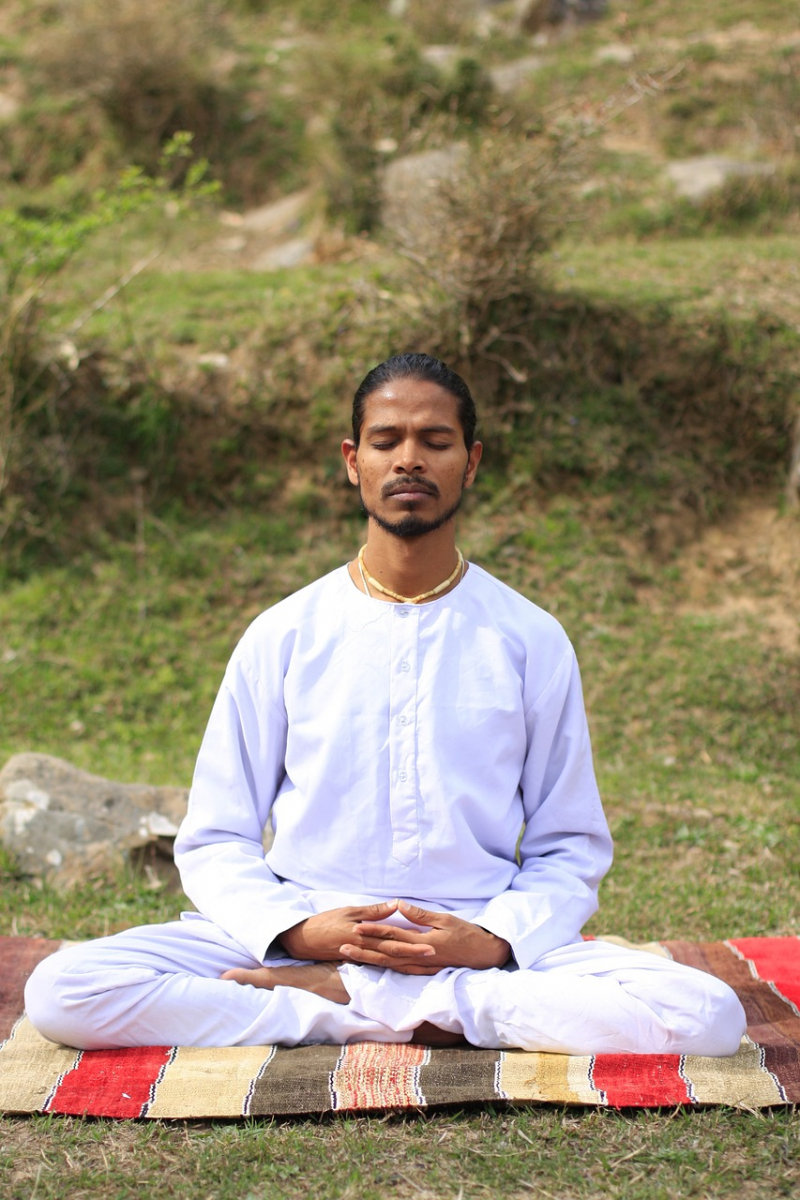
Meditation - Photo on Pixabay (https://pixabay.com/photos/yoga-indian-indian-yogi-symbol-2232807/) -
Vesak, also known as Buddha Purnima or Buddha Day.
Vesak holds a significant place in the Buddhist calendar as one of the most important festivals. It pays homage to the birth, enlightenment, and death of Siddhartha Gautama. Vesak is observed on the full moon day in Vesakha (usually in April or May) according to the lunar calendar.
Vesak is a fervently celebrated occasion among Buddhists worldwide. Vibrant decorations embellish Buddhist temples, drawing devoted followers to partake in religious ceremonies and meditative practices. On this significant day, Buddhists observe various rituals, such as offering flowers, incense, and candles to images of the Buddha, engaging in meditation, reciting scriptures, and performing acts of benevolence and compassion. Many also choose to abstain from consuming meat and alcohol as a mark of reverence on this auspicious occasion.
Vesak carries profound spiritual significance for Buddhists, serving as a poignant reminder of the Buddha's life, teachings, and path to enlightenment. It offers an opportunity for self-reflection, recommitment to the instructions, and deepening one's spiritual practices.
Vesak is a momentous and joyous occasion for Buddhists, symbolizing a time of reverence, celebration, and contemplation on the profound impact of the Buddha's life and teachings on humanity. It serves as a timeless reminder of the message of compassion, wisdom, and the pursuit of inner peace, continually inspiring millions of Buddhists worldwide.

Vesak - Photo on Pixabay (https://pixabay.com/photos/pagoda-temple-buddhism-building-7181276/) 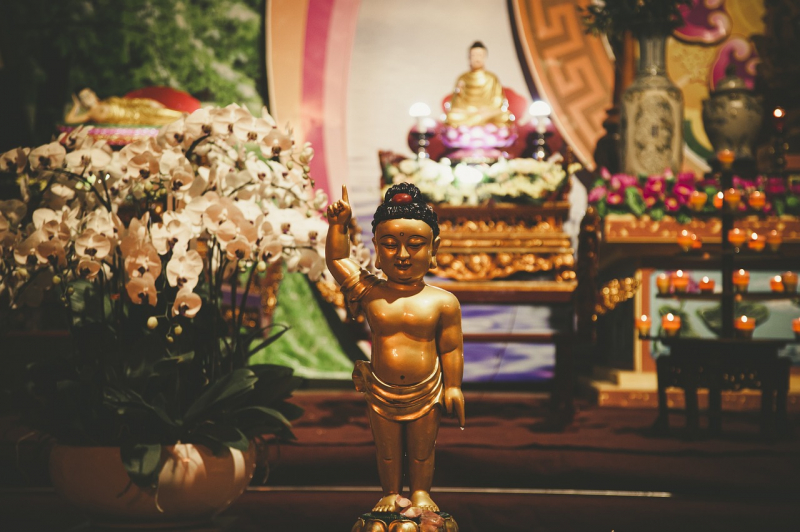
Vesak - Photo on Pixabay (https://pixabay.com/photos/vesak-buddha-birth-buddhism-5142395/) -
The core teachings of Buddhism revolve around the Four Noble Truths, which address the nature of suffering and the path to liberation from it. These truths were the Buddha's first teachings after enlightenment and formed the core of Buddhist philosophy.
The Truth of Suffering is The first Noble Truth that acknowledges the undeniable presence of suffering and dissatisfaction (dukkha) in life. It encompasses physical and emotional pain and the inherent impermanence and unsatisfactory nature of all conditioned existence. Suffering is a shared human experience, and the Buddha encouraged his followers to confront it honestly and with recognition.
The Truth of the Origin of Suffering (Samudaya) delves into the root cause of suffering, which the Buddha identified as craving and attachment to worldly desires. This craving stems from ignorance and a fundamental misconception of the true nature of reality. Pursuing pleasure, possessions and the clinging to impermanent things inevitably lead to suffering.
The Truth of the Cessation of Suffering is The third Noble Truth. By relinquishing the causes of suffering, namely craving and attachment, one can attain a state of liberation and freedom called Nirvana. Nirvana is an ultimate state of peace, where suffering is extinguished.
The Truth of the Path Leading to the Cessation of Suffering expounds on the Eightfold Path as the means to end suffering and attain Nirvana. The Eightfold Path serves as a practical and ethical guide to living, encompassing the cultivation of wisdom, moral conduct, and mental discipline.
By comprehending the Four Noble Truths and embracing the Eightfold Path, Buddhists strive to attain enlightenment and liberate themselves from the cycle of birth and rebirth, ultimately reaching the state of Nirvana. These profound teachings remain the cornerstone of Buddhist practice and philosophy, resonating across diverse traditions.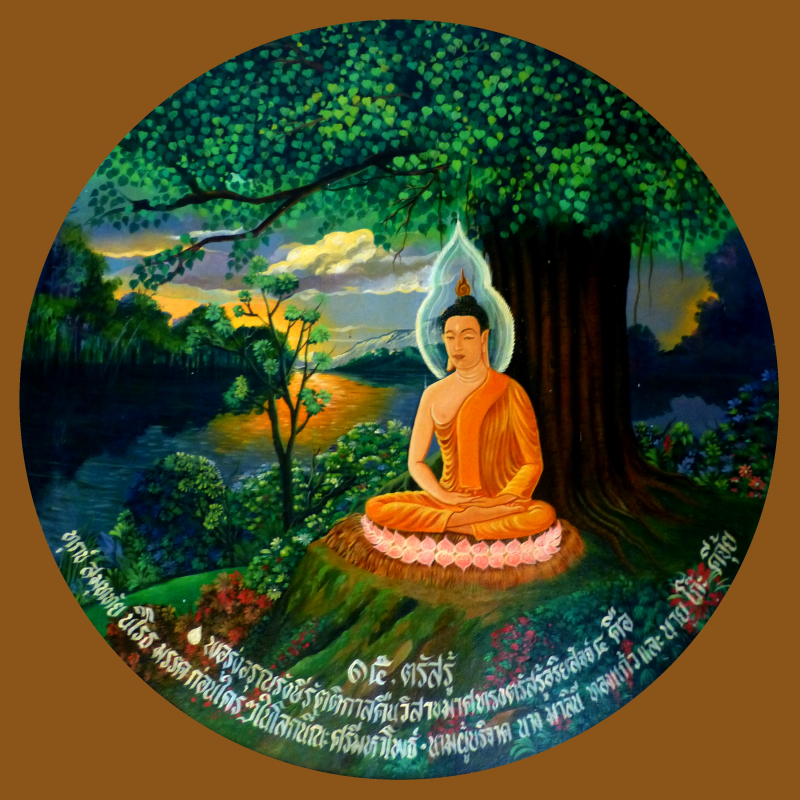
The Buddha Awakens to the Four Noble Truths at Vesakha Full Moon Day - Photo on Wikimedia Commons (https://commons.wikimedia.org/wiki/File:039_The_Buddha_Awakens_to_the_Four_Noble_Truths_at_Vesakha_Full_Moon_Day_%289270775411%29.jpg) Video by Inch by Inch Stories -
Meditation constitutes a significant aspect of teaching.
Meditation has been nurtured in diverse cultures and spiritual traditions for thousands of years. It entails training the mind to attain mental clarity, emotional calmness, and heightened awareness. Scientific studies have extensively explored meditation, revealing its positive effects on psychological and physical well-being.
Meditation is regarded as a pivotal practice for spiritual growth and self-discovery. Cultivating mindfulness encourages individuals to be fully present and aware of the current moment without judgment. Through meditation, practitioners develop focused attention and the ability to observe their thoughts and emotions objectively.
In Buddhist teachings, meditation is seen as a path toward liberation from suffering. Through meditation, practitioners gain insight into reality's impermanent and selfless nature, ultimately ending suffering (Nirvana). Meditation extends beyond formal sitting sessions; it can seamlessly integrate into daily life as a mindful approach to everyday activities. This integration empowers individuals to infuse a sense of presence and awareness into all aspects of life.
In essence, meditation acts as a transformative and empowering practice, enhancing the teachings of diverse traditions. Its universal appeal lies in its capacity to offer practical mental and emotional well-being benefits while providing profound insights into the nature of existence and consciousness.
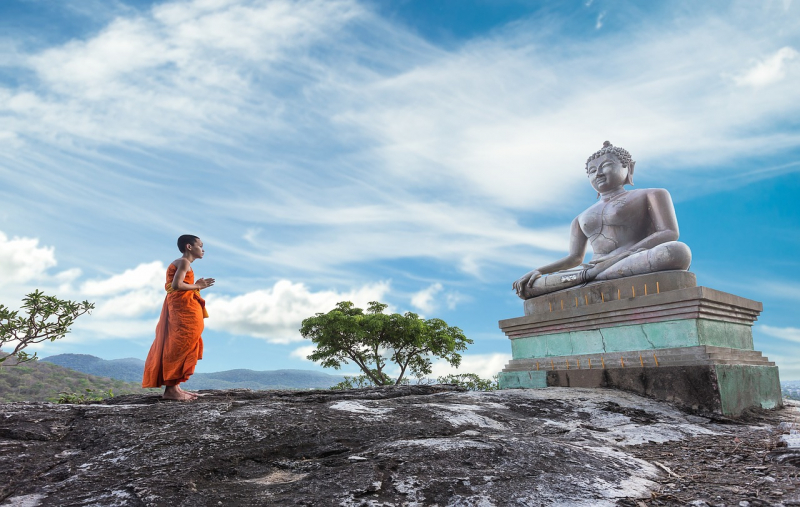
Photo on Pixabay (https://pixabay.com/photos/monk-buddha-statue-sculpture-1782432/) 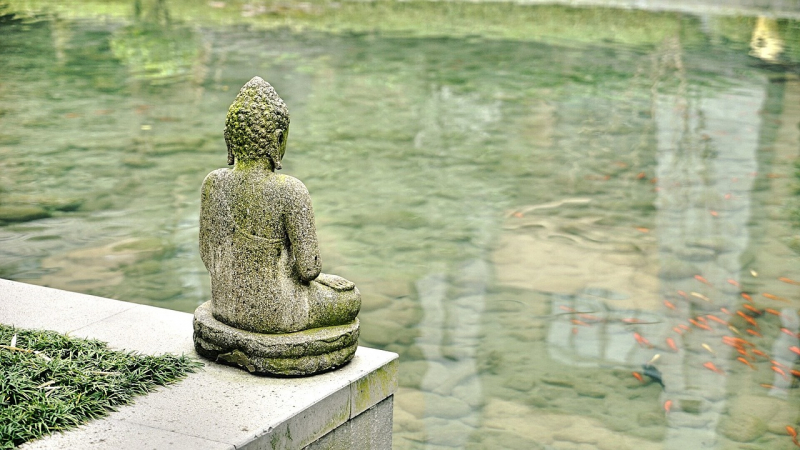
Photo on Pixabay (https://pixabay.com/photos/buddha-statue-pond-sculpture-1177009/)












